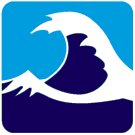 What Do You Know About Oceans?
What Do You Know About Oceans?
Goals:
- Identify students' prior knowledge of oceans, seas, the
Caribbean, and mapping terms.
- The students will reflect on the ocean.
- The students will enhance their knowledge of the geography of
the world through a mapping activity.
- The students will work cooperatively with other students on
problems to find solutions.
- The students will gain basic knowledge of the climate, general
location, and the specific location of the Caribbean relative to
the students' hometown or state.
Resources/Materials:
- Multiple copies of unlabelled world maps (enough for every
student)
- Transparency of an unlabelled world map
- An overhead projector for the map
- A few copies of the general map of the world
- Multiple copies of a list of terms for the activity (enough
for each group)
- Colored chalk and erasable markers
- List of questions for the activity
- One die
- Journals (one for each student)
- Poem - "My Ocean Speaks" by Olga Cossi
- Soft ocean music
Time:
Procedure:
- Write the four categories "Oceans," "Ocean/Sea Names," "The
Caribbean," and "Mapping Terms" on the board.
- Divide students into groups of three or four and assign each
group a different colored piece of chalk.
- Assign each group a category and ask them to write as many
things that they can about that topic for two minutes. Rotate the
groups to the next category until they have been to each category.
- After the groups are finished, discuss the topics they listed
and relate them to the overall unit.
- Read and discuss the poem "My Ocean Speaks" by Olga
Cossi.Ý Pick out unfamiliar words and discuss how the
narrator feels about the ocean.
- Have the students write a reflective journal entry about their
experience or inexperience with the ocean. (Optional: Play ocean
music).
- Explain activity.
a) Divide the students into groups of three or four.
b) Give each student an unlabelled map of the world.
c) Pass out to each group a list of terms that will be used to
label the map.
d)Assign a number (1-6) to each member of the group.
e) For the activity . . .
- Ask a question related to the map.
- Give students time to discuss the answer.
- After everyone agrees on an answer, have the students
label their maps.
- Roll a die to determine the person who is to answer for
each group.
- Ask those students for the answer that their group cam e
up with.
- Have one student write the answer on the unlabelled
world map transparency. If none of the groups are
successful, ask the students to use the resource materials
to find the answer. Continue this procedure until the
questions are completed.
- To conclude, discuss the new things they learned.
Assessment:
- Observation of individual student participation in the
chalkboard activity. (Criteria for success = Any movement forward
by the students.)
- Each student will turn in his/her journal. (Criteria for
success = At least one paragraph about the ocean showing some
depth of reflection.)
- Each student will turn in a copy of their completed map and
answers to location and distance questions. (Criteria for success
= Correctly labeled map with terms used during the activity and
compete answers to location and distance questions.)
- Informal observation of participation in group. (Criteria for
success = Individual active listening and discussion with group
members. Please see sample rubric.)
Curricular Strands and Major Concepts:
- Language Arts: Through discussion in their groups, the
students work on communication skills. Students also use their
writing skills and listen to poetry.
- Science: They determine the climate of the Caribbean as part
of the mapping questions.
- Math: They calculate the distance from their hometown to an
island in the Caribbean as part of the mapping questions.
- Social Studies: They utilize their map skills to locate and
label oceans, seas, and continents. They also analyze the
geography of the world.
Possible Extensions:
- Analyze the geography of the Caribbean in detail.
- Redo the activity throughout the course of the unit to review
and determine what the students have learned.
- Incorporate more poetry that deals with oceans:
Lessac, Frane. Caribbean Canvas. Lippincott, 1989.
- Journal or write what life might be like in the Caribbean.
- Information and maps on the internet:
http://www.caribinfo.com/directory/cref.html
Back to Outline
Caribbean Cruisers - developed by Sara Bork, Carrie Kriescher,
Candice Murphy, and Melissa Randall
Lesson Plans List
 What Do You Know About Oceans?
What Do You Know About Oceans? What Do You Know About Oceans?
What Do You Know About Oceans?